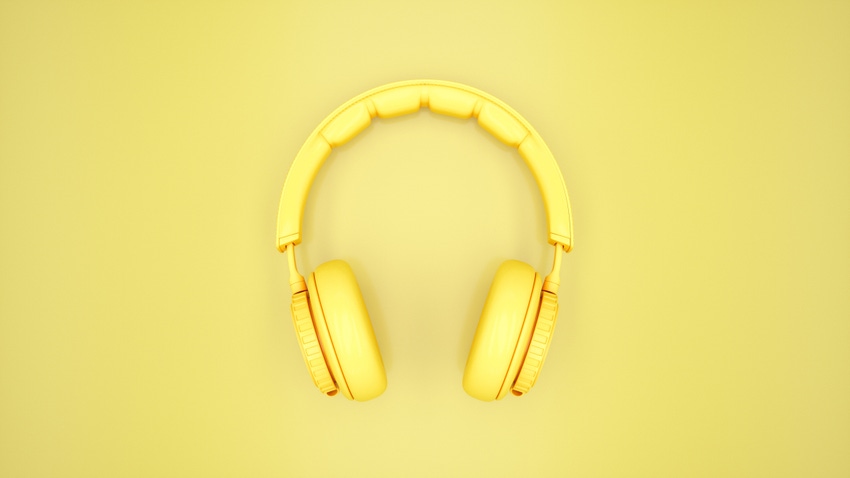How 3D Printing Is Transforming Headphone Personalization
3D printing is delivering custom-fit headphones that also provide quality audio performance.

At a Glance
- Fused deposition modeling (FDM) and stereolithography (SLA) are being used to create personalized designs
- Ergonomic designs customize weight and balance of the headphones and contribute to user comfort
- Advanced design software and high-quality materials help to optimize sound quality
Over the last decade, 3D printing has evolved from a niche technology used by industrial manufacturers to a mainstream tool utilized by individuals and businesses alike.
One area where 3D printing has had a significant impact is in the world of custom headphones. With traditional manufacturing methods, creating personalized headphones was an expensive and time-consuming process that was only accessible to a select few.
However, thanks to 3D printing, this has changed drastically. Now, anyone can easily access custom headphones explicitly designed for their needs and preferences.
3D Printing Technology Overview
The ability to print complex and intricate designs with precision makes 3D printing a game-changer in the world of product customization.
The two most common types of 3D printing technologies used for headphone personalization are fused deposition modeling (FDM) and stereolithography (SLA).
FDM: This is the most accessible and affordable type of 3D printing. It works by melting a plastic filament and extruding it layer by layer to create the desired shape. The benefit of FDM for headphone personalization is its ability to print in a wide range of materials and colors, making it ideal for creating unique and durable headphones.
SLA: This type of 3D printing uses a liquid resin that is cured by a laser or UV light to create the final object. SLA printers can produce smoother and more detailed results than FDM printers, making them ideal for creating intricate designs or smaller headphone parts. However, resin printing can be messy and requires post-processing to remove excess resin.
The printers used to create custom headphones are typically desktop-sized and can range from a few hundred dollars to thousands of dollars, depending on their capabilities. This puts them within reach of individuals and small businesses, making personalized headphone production more accessible than ever before.
Customizing Headphones with 3D Printing
One of the primary benefits of 3D printing for headphone personalization is the ability to create custom-fit headphones.
Traditional headphones come in limited sizes, which can be uncomfortable and cause discomfort after extended use.
With 3D printing, users can have their headphones designed to fit their ears' exact shape and size, ensuring a comfortable listening experience.
Additionally, 3D printing allows for more significant design freedom. Rather than being limited to a few colors and basic shapes, individuals can now design headphones in any shape or size they desire. This opens up endless possibilities for unique and personalized designs that reflect the user's personality and style.
3D printing also allows for easy modification and iteration. If a user wants to change certain aspects of their headphones, they can easily make those adjustments in the digital design and print a new version without starting from scratch.
The rise in affordable 3D printing has enabled individuals to create their own headphones at home. Access to affordable desktop printers and free or low-cost CAD software allows anyone to become a headphone designer.
This level of accessibility has democratized the headphone market, allowing for a more diverse range of products and designs.
The Role of Engineering in 3D-Printed Headphones
At the end of the day, 3D printing is only as good as the design behind it.
Engineering plays a crucial role in creating 3D-printed headphones that are aesthetically pleasing but also functional and durable.
From the materials used to the design of the internal components, headphone engineers must consider various factors to ensure the headphones perform well and meet user expectations.
They must also consider ergonomics, such as the weight and balance of the headphones, to ensure they are comfortable to wear for extended periods.
The audio quality of 3D-printed headphones also depends on the engineering behind them. The design and placement of drivers and the materials used for sound insulation can significantly impact the sound quality.
As 3D printing technology continues to evolve, so does its impact on headphone personalization.
With advancements in materials and methods, we can expect to see even more intricate and high-quality custom headphones in the market.
Crafting Audiophile Listening to Perfection
For many audiophiles, their headphones' sound quality and uniqueness are essential elements of their listening experience.
Unfortunately, many branded headphones have a hefty price tag and still fail to fulfill users' specific needs.
While the best gaming and music headphones for audiophiles offer spectacular audio output, 3D printing might be an option for the serious hobbyist with a knack for technology to design and create their own customized headphones.
With 3D printing, they have the ability to create personalized headphones that not only fit their ears but also deliver superior audio performance.
With the help of advanced design software and high-quality materials, engineers can tailor every aspect of the headphones to optimize sound quality for a specific user's preferences.
This level of personalization allows for a more immersive and exceptional listening experience that is unmatched by mass-produced headphones.
Challenges and Future Possibilities
While we've described the many benefits and potential of 3D printing for headphone personalization, some challenges still need to be addressed.
For starters, the materials used in 3D printing can limit headphones' durability and sound quality.
The most common material used in FDM printing is PLA (polylactic acid), which, while commonly available and affordable, may not provide the strength and flexibility needed for high-quality headphones.
Other materials like ABS (acrylonitrile butadiene styrene) and nylon may offer better durability and flexibility. However, their use in 3D printing can be more complicated, requiring greater expertise and expense.
These materials also require specialized equipment, such as heated print beds, which may not be easily accessible to everyone, and fume extraction systems to handle any potentially hazardous emissions.
SLA printers also have their challenges, with the resin used being expensive and sometimes toxic to handle. Most 3D printer resins are also fragile and prone to breaking, making them less ideal for durable headphones.
However, as technology advances, new printers and materials are solving these challenges and making 3D printing an even more viable option for headphone personalization.
With the rise of affordable desktop printers, easy-to-use design software, and a continuously expanding range of materials, the possibilities for custom headphones are endless.
About the Author(s)
You May Also Like





